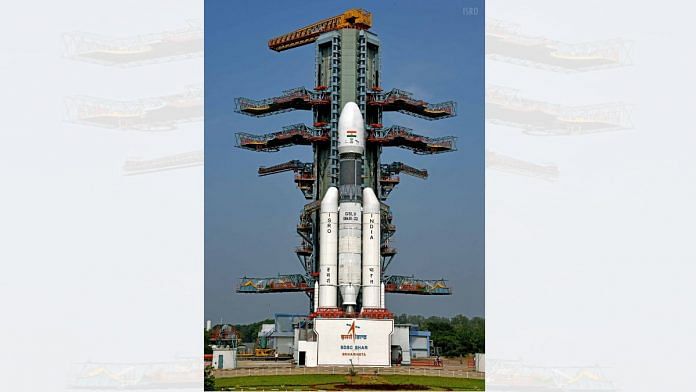The GSLV Mk-III is expected to be the launcher for ISRO’s ambitious human spaceflight programme.
Bengaluru: The Indian Space Research Organisation (ISRO) has launched its latest communication satellite GSAT-29 atop the new and powerful GSLV Mk-III Wednesday evening.
The rocket took off from the second launch pad at the Satish Dhawan Space Centre in Sriharikota, Andhra Pradesh, at 5.08 pm.
Long in the making, the GSLV Mk-III is a behemoth, bigger and better than any rocket ISRO has produced before.
Though yet to be human-rated, the rocket is expected to carry astronauts when India attempts its first human spaceflight, which is being pursued by ISRO with a 2022 deadline in mind. It is also likely to carry the payloads for Chandrayaan-2, India’s second lunar exploration mission, in January next year.
Wednesday’s mission will mark the second developmental flight of the GSLV Mk-III, after which the rocket will be declared as operational.
The first took place last year, when it launched GSAT-19 in June.
The mission
The mission, called GSLV Mk III-D2/GSAT-29, aims at providing high-speed bandwidth to ISRO’s Village Resource Centres (VRC).
Set up in partnership with NGOs, trusts and state governments, the VRCs tap satellite technology to take services such as non-formal education, skill development, and agriculture advisories to India’s remote rural areas.
GSLV Mk III-D2/GSAT-29 specifically strives to improve communication services in the state of Jammu and Kashmir, and the Northeast.
Also read: Modi says ISRO eyeing human spaceflight in three years. The claim may not be far off
GSAT-29
The main payload for this mission is an advanced communication satellite, which has been categorised as high-throughput and capable of providing twice the efficiency of a regular satellite in the same spectrum.
It is a multi-band, multi-beam satellite containing transponders specifically designed to penetrate the mountainous and inaccessible regions of India.
The 3,423-kg satellite will be placed into a geosynchronous transfer orbit of 190 km x 35,975 km, after which it will make a series of burns to settle into the geostationary orbit at 35,786 km.
The satellite will also work in conjunction with the Indian National Satellite (INSAT) constellation, and is expected to function for at least 10 years.
Along with the main payload, the rocket will also carry three experimental payloads that will be developed for future launches.
These are: Twin satellites communicating over microwave wavelengths; an experimental payload for optical communication (using light to transmit data in space); and a high-resolution camera for earth imaging.
The payloads are all expected to advance the nation’s Digital India programme.
GSLV Mk-III
The functional GSLV Mk-III has been a rocket long in coming. It was even expected to launch the Mangalyaan, India’s successful Mars orbiter mission, five years ago, but was reconceptualised to be more powerful.
It is the heaviest launch vehicle in India, with double the load-carrying capacity of its predecessor, the GSLV Mk-II. It is 43.5 metres tall — just about the height of India Gate, Delhi — and weighs 641,000 kg. It can carry a payload weighing 10,000 kg to the low earth orbit (at 600 km) and 4,000 kg to the higher geostationary transfer orbit (35,000 km).
Like other ISRO rockets, it is divided into three stages: The first consists of the central core stage flanked by two solid boosters, carrying solid fuel. The solid booster is the third largest solid rocket motor in the world, after the space shuttle boosters and the Ariane 5. The second stage carries liquid fuel and is powered by two enhanced thruster Vikas 2 engines.
The third, known as the cryogenic upper stage and called C25, uses liquid hydrogen and oxygen as fuel, providing the necessary thrust at the last stage of the flight. On top of the third stage sits the spacecraft within the payload fairing, the protective shield for the payload.
The success of Wednesday’s mission will be imperative to declare the GSLV Mk-III operational and ready to use for future missions.
Also read: Marriage stopped her from going to IIT, but she still became ISRO’s top engineer



